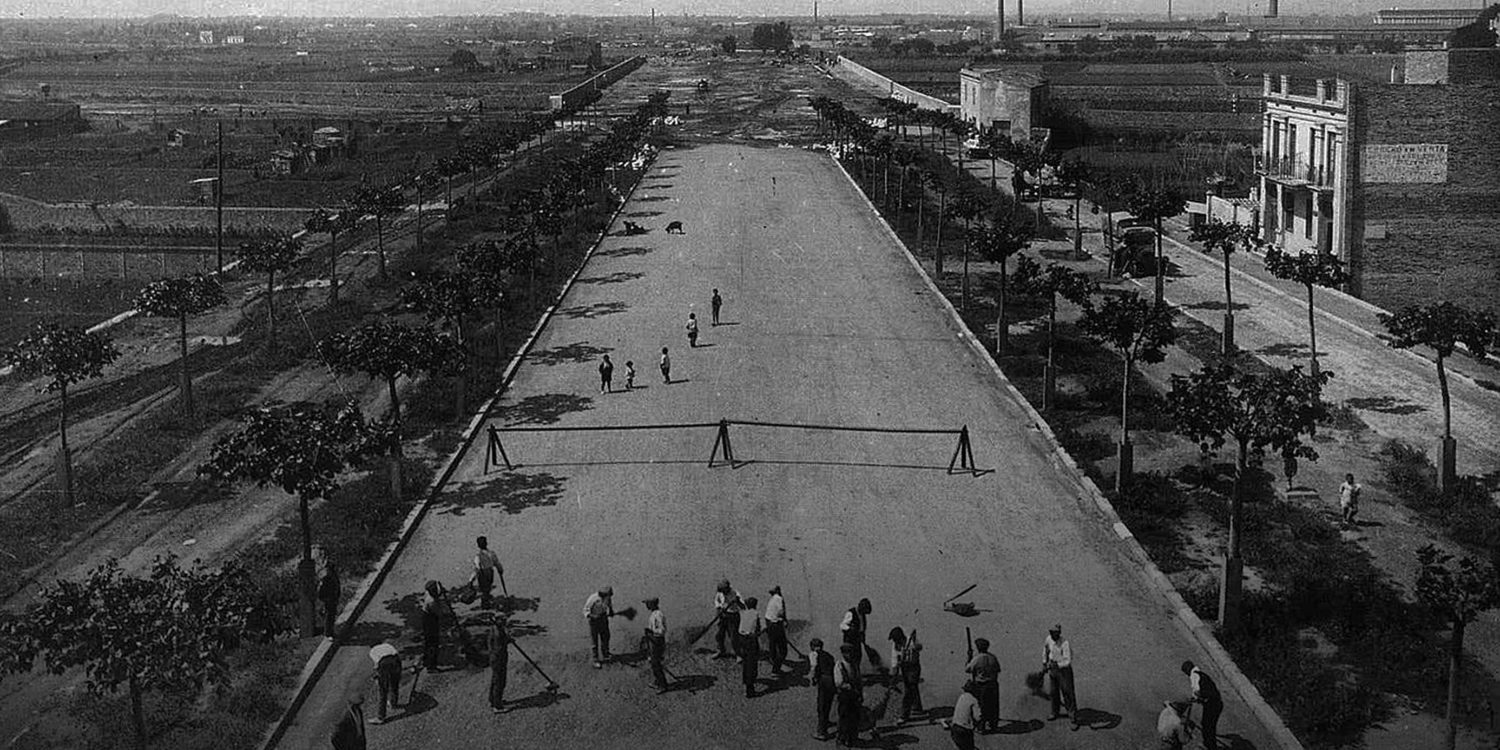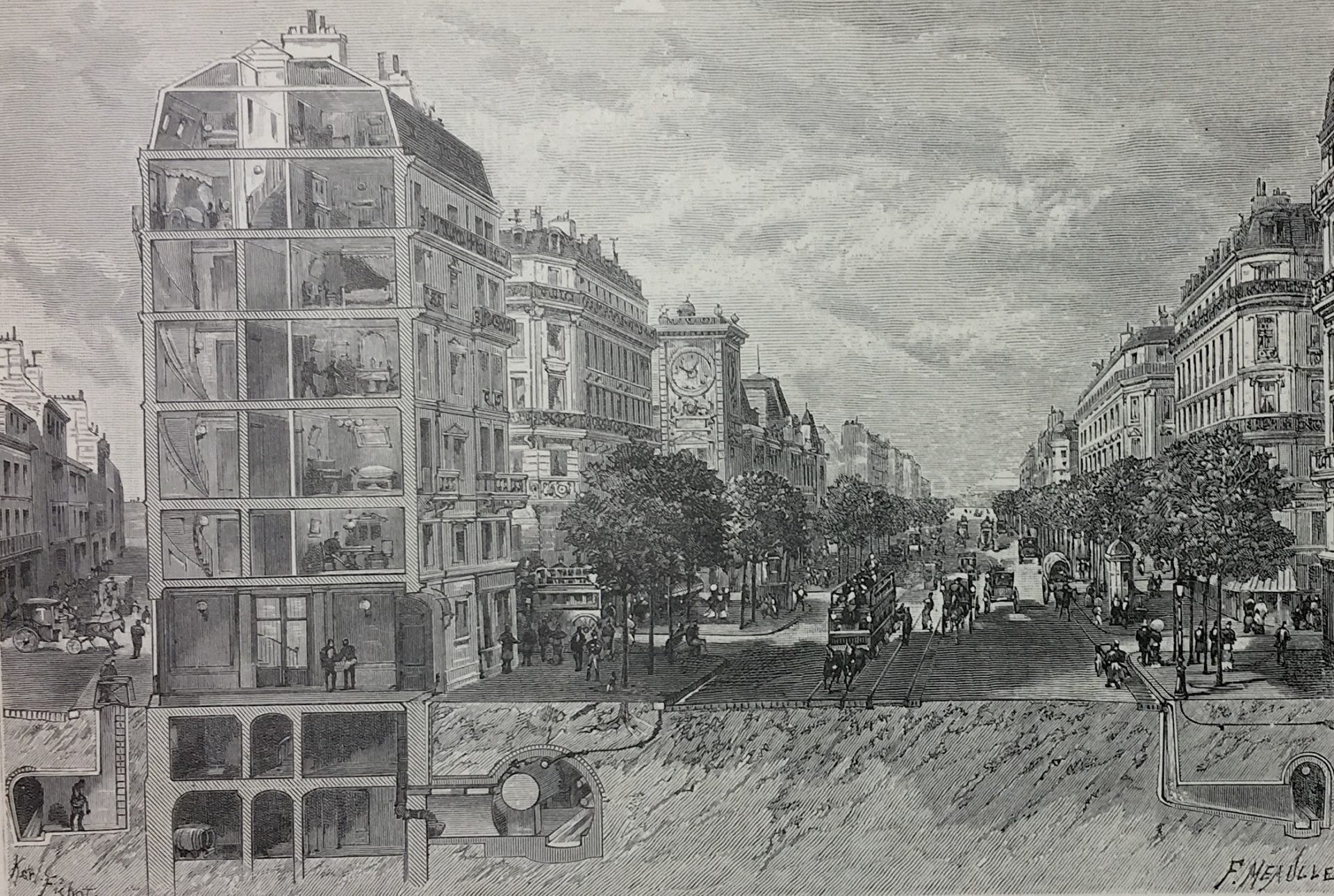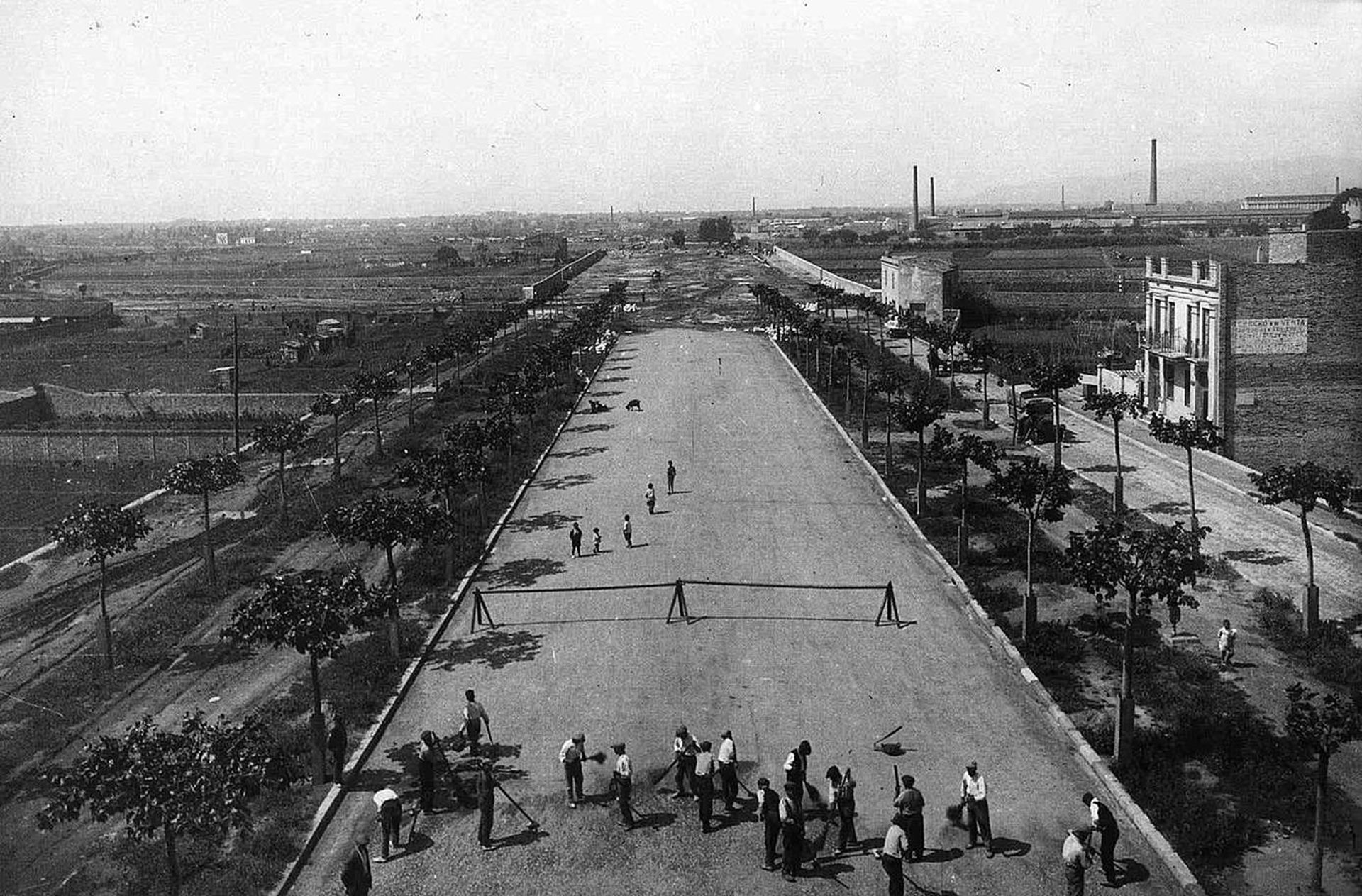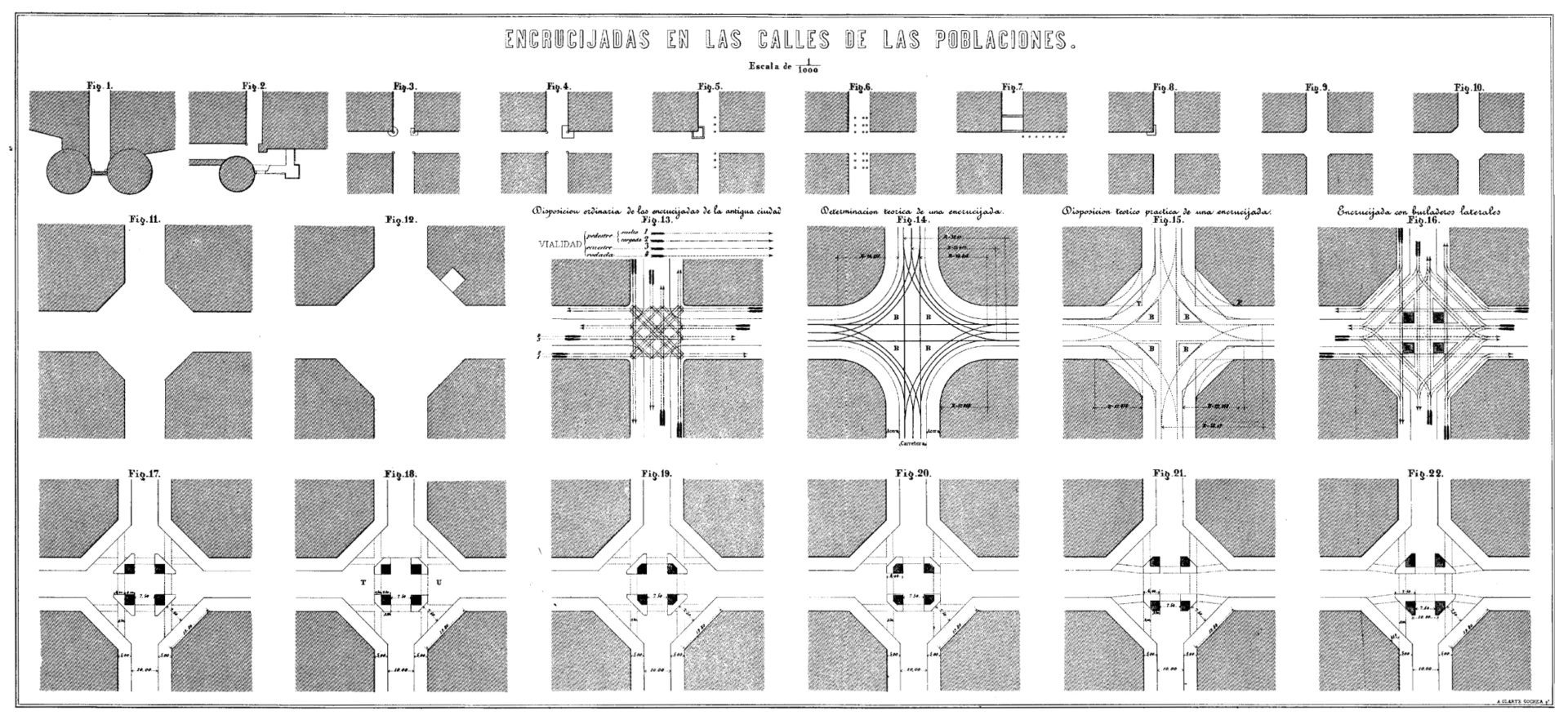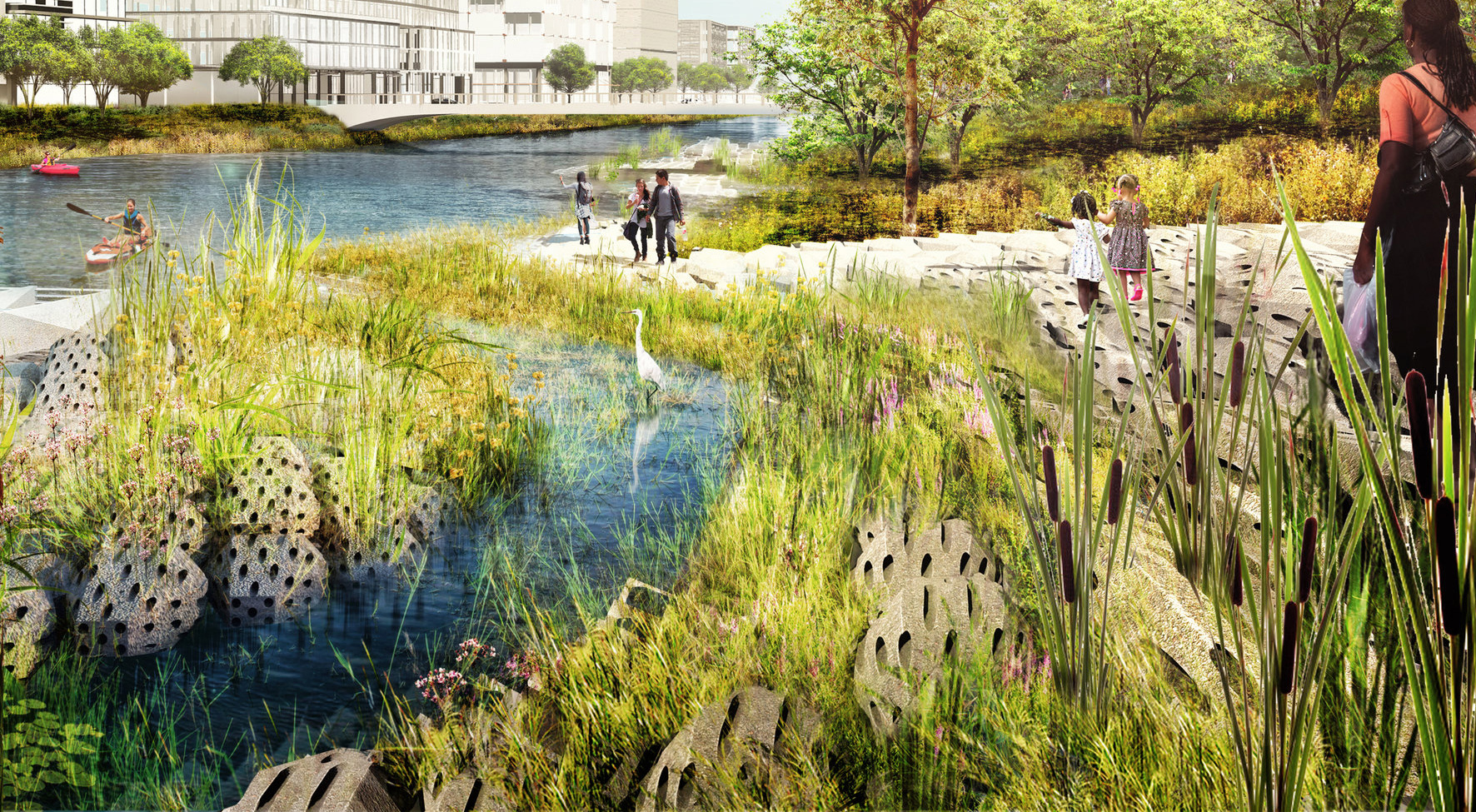Urbanisation is not and has never been entirely about cities. Beginning with the earlier colonial practices of spatial planning and its projections onto the supposedly “open” spaces of newly settled land, and continuing as a project to establish one continuous global system of social, political and economic control, “the urban” has now decisively eclipsed the city, encompassing the entirety of our planet—such that we can even talk about the urbanisation of the oceans.
This is the provocative argument set out by architect and urban theorist Ross Exo Adams, in his new book Circulation and Urbanization, which uses the work of famed Catalan planner Ildefonso Cerdá as a starting point to explore the emergence of the urban as a set of techniques of social control—from infrastructure to the organisation of domestic space. Cerdá is most well known for his plans for the expansion of Barcelona after its medieval walls were torn down, but in his more theoretical writings he also popularised the term “urbanisation” (urbanización). Central to Cerdá’s theories, Adams shows us, was the notion of “circulation”, the idea that in an urban environment, people, things, and commodities should be able to move without friction, in contrast to the stagnant, overcrowded cities of the early nineteenth century. Far from his vision being limited to cities, Cerda imagined urbanisation as the extension of his project in Barcelona to encompass the entire globe, which would eventually eclipse the city altogether, producing an entirely new space that is neither city nor country, but urban.
As so many now claim, we have finally arrived at a version of Cerdá’s fully urbanised world, albeit one that is reflecting little of his utopian enthusiasm. Instead, in many ways, urbanisation has become a nightmare from which we are all trying to awake. What, then, can this history Adams outlines tell us about strategies for moving beyond the “urban” as an all encompassing system in which we are, supposedly, condemned to live? With urbanisation central to the threat of environmental catastrophe, to increasingly militarised borders and neighbourhoods, and the intense spatial inequalities that characterise our contemporary moment, how can a rethinking of the very meaning of urban space help architects, designers, and theorists act to change it? In this interview, Adams begins by expanding on the argument of his book, before offering his thoughts on the practical implications of his writing for all of us invested in the politics of the “urban.”
Jake Soule: Perhaps we should begin with a very simple question: if not a synonym for something like “cityness,” what is the urban? And how can we learn to think about the urban without reverting immediately to thinking of it synonymously with cities?
Ross Exo Adams: I describe the urban as a fundamentally new way to organise and control space, and what happens in it—a political technology that emerged sometime in the nineteenth century in Europe. By this term, I mean to describe two parallel processes we see happening in this period: on the one hand, the broad reorganisation of space across a range of major cities in Europe and, on the other, the deployment of new administrative, legal and political means by which to manage the people who had come to occupy these spaces.
While of course the history of the nineteenth century European city is very well documented, what I realised when I first began this project 10 years ago was that all of the histories of this period seemed to rely on already established historical narratives that could be confirmed by the material they assessed: they assumed that the urban was the product or symptom of some other historical trend, rather than a coherent thing in its own right, and they treated space, the city, its infrastructures and architecture as neutral materials shaped by external forces and logics. This was the case whether it was an affirmative narrative of the “modernisation” of the city that reinforced a larger historical arc of periodisation, or if it was the materialisation of capitalism as the newly dominant mode of production that Marxian geographers were interested in—or something in between.
So I began to question if what we were seeing in this moment (the nineteenth century) was more profound than even something like capitalism “shaping the world in its image” could explain. I wondered what we might discover if we took the question of space, architecture, infrastructure and, in general, the ways in which we organise matter and bodies in the world as a place to begin to question how power has constituted itself historically. Rather than merely treating space, architecture, infrastructure and material as the objects that confirm or refute existing socio-political or economic analyses—say, from Marx, Foucault, or Benevolo or Tafuri for that matter—what if these sites of inquiry open ways for us to explore how power has composed itself throughout modern history? What if, in other words, unexplored questions about the constitution of western forms of power may be found in a history of space and its organisation?
JS: The other keyword of your title is “circulation.” Why is/was circulation so fundamental to urbanisation? It may seem obvious to us that the urban is about movement (of commodities, of people, indeed of entire landscapes), but it seems that circulation has an even more specific meaning and significance for you in terms of distinguishing the emergence of the “urban” in the nineteenth century from the spatial and geographical forms that preceded it.
REA: If the urban can be examined as a historically contingent mode of organising space bound up with the reorganisation of life in the nineteenth century, then such a trajectory forces us to treat its nineteenth century emergence not as a kind of “origin”, but quite the opposite: it forces us instead to trace its long development across the centuries of spatial, political and social experimentation that led up to its emergence in the nineteenth century. The question is: how? This is where circulation comes in. If there is one objective distinction that urban and architectural historians seem to agree on between the modern, western city of the nineteenth century and its predecessors, it is the fundamental role that circulation comes to play in restructuring it: suddenly everything in the nineteenth century city is about movement, and technologies of circulation seem to be the solution to all sorts of problems that cities throughout the eighteenth and early nineteenth centuries endured. Which perhaps explains why the notion of circulation in these histories seems to be bound up so tightly with ideologies of progress, science, freedom and communication that accompany such narratives. And of course capitalism doesn’t exist without the circulation it demands of capital, labour and commodities. In other words, circulation appears just as novel and self-affirming to this moment as modernity itself. However, what is too easily overlooked is that circulation itself has a much longer history. And, interestingly, it is one that tends to be tied to longstanding structures of power, truth and order in the west, extending from systems of divinity to early modern statecraft to maritime discourses of trade and the administration of Europe’s colonial and imperial spaces and so on.
By approaching the urban from a political history of circulation, what I show is that the urban is a space that derived its techniques and technologies from earlier spaces and practices that often had nothing to do with “cities” per se—principally, early modern forms of territorial knowledge, colonial techniques and maritime geographies. So, rather than a kind of modernised, systematised update to the Medieval and Baroque cities of Europe, I argue that the urban should be seen more precisely as a spatial and political order in its own right: not simply the product of a historical reconstitution of power, but also its vehicle and instrument.
JS: A key figure in your book is Ildefonso Cerdá, the nineteenth century urban planner best known for his redesign and expansion of Barcelona. However, you are more concerned with the writings and plans of his that went well beyond Barcelona, and in fact constitute a radically novel reconceptualisation of the urban. How would you introduce people to Cerdá who may only know him for his association with Barcelona? Why is he, rather than say, Haussmann, Le Corbusier, or Robert Moses, so central to your history of urbanisation?
REA: Cerdá is an interesting figure whose relative obscurity reveals at once the conceptual timidity and disciplinary limitations of architectural history. That’s not to say he’s unknown: indeed, Cerdá is someone who is a deeply canonical figure, yet his narration in architectural history ignores almost entirely his vast body of written, theoretical and conjectural work—work which largely remains overshadowed by the all-too-easily fetishised plan he carried out for Barcelona’s reform and extension in 1859. There are of course historians like Françoise Choay who have made the case for Cerdá’s importance in the history of urbanism—indeed, a large part of her book The Rule and the Model is dedicated to a close reading of Cerdá’s theoretical writing—and her work certainly influenced my own.
However, work like Choay’s isn’t enough to shift the scales significantly. Part of the problem is that the body of work that I focus on in my book—and which makes up the majority of Cerdá’s life’s work—is something we might see as non-architectural in nature: theories, musings, statistics, excursions into sociology and philosophical conjectures. There is also the problem that much of his written work is rambling and not particularly well-written. His most important work, only halfway finished, The General Theory of Urbanisation (Teoría general de la urbanización) sprawls across nearly 1600 pages. Yet, it is incredibly prescient: his lifelong project was a call for a new kind of space, which he called the “urbe“, to replace the outdated cities, towns and hamlets that dotted the world. Like many of his time, Cerdá was a classical liberal who felt that technology and capital had a quasi-theological capacity to elevate humanity to a higher, apolitical state of unlimited peace. He was convinced that his urbe was the medium that could enable both sides of this ambition. For this reason, urbanization was not only a means to replace the city, it was also a mechanism that would transform the countryside, wilderness and even the oceans into a single, interconnected urbe, stretching across the entire planet and connecting all of human society—a plan that today might reveal itself in a more terrifying cocktail of global village, planetary urbanisation and climate crisis.
What I suppose I would like people to know about Cerdá is that, in my view, he provided the first and perhaps clearest account of the urban as it arose around him in Europe. This reading requires a bit of interpretive generosity since Cerdá’s project was of course not an “account” per se, but rather a proposal for a space yet to come—a space which he believed he had invented outright. Although he did invent the term urbanización, I see his work as more of a diagram that reveals how space, movement and the control of bodies could be planned for the first time.
More to the point, what is perhaps most remarkable is how insistent his writings are that the urban was meant to integrate the technical and spatial with the political and biological. For it to work, his techno-administrative and universal urbe had to be a machine that would see the modulation of human behaviour as a prerequisite of its functioning: in a way, the urban was a device for the anonymous correction and control of human bodies. For this reason, and again following tendencies he saw at the time, he reduced the urbe to a stark dichotomy between private, isolated and feminised domestic space and a highly systematised infrastructural network of male movement—rest and circulation; there was no in-between. Less than a new kind of city, the urbe was a spatial template on which to constitute new relations between society and technology, nature and capital, justice and subjectivity, territory and private property, movement and security, life and labor, woman and man. Not only would the urbe displace the city: it was the medium that, by its very spatio-technical disposition alone, would render the state and politics redundant vestiges of the past. Reading it this way offers much to understand about our contemporary urban space.
JS: You claim in the introduction of your new book that “the urban for architects has gone almost completely unquestioned and is better understood as a kind of condition “out there”, whose rules and technologies are often described in terms approximating those of nature.” (6) As someone with training in architecture and architectural theory, what would you want architects to take away from your study of urbanisation? Are architects still relevant actors within what has been called “planetary urbanisation”?
REA: This is a great question! For me, as someone who teaches architecture and urban design, the biggest hurdle we have at present is our imagination. I’ve been writing a fair amount on how, for the past two decades, designers’ confrontation with climate change seems to be a collective statement of denial—that greening architecture and urbanism is sufficient to the task. What this reveals are two things: one, that we urgently need to reexamine architecture as a practice and form of knowledge deeply interconnected in larger structures of power, and, two, that we need to ask much more of what it can be in the world.
It is important to understand space and its design as impossible to separate from the interests of capital or from the modes of policing and privatising public space, or to put it more broadly, from understanding relations that necessarily prevail between the organisation of space and the forms of control that result. Architects and (even more so) urban designers cannot pretend to be innocent, creative workers. So this implies two things. First, we have to see ourselves unavoidably as components within larger networks of power whose labour is put to use to benefit those in power. Nor can we hide behind good intentions. The massive projects to reimagine the coastal regions of New York City or of the Bay Area (and many others) are just as much diagrams of capital investment and return as they are cynical images that express the innocence of the designers who made them. Because they circulate in networks that help secure future projects, these images conceal the fact that such projects often enable the economic displacement of the very same communities that they use to promote them. As long as we create projects in a neoliberal world in which capital, leveraging climate crises, seeks to expand its reach, we cannot expect the interests of private capital to align meaningfully with the needs of working class, non-white neighborhoods that are so often at the forefront of environmental disasters. Second, we architects and urban designers must take a side. If we actually do care about things like equity, thwarting climate change, ending systemic racism, etc, we have to become comfortable seeing ourselves as partisan actors within this increasingly discernible field of power. What this means, in part, is that we have to account for the stakes and the complex intersectionality of reorganizing space in a neoliberal and neofascist age.
What we desperately need are new world imaginaries that can find purchase in a broad cultural space. Just as with our present knowledge, such imaginaries have to embrace an understanding of not only space, but the ways in which it works to support social formations of care and solidarity; how it seeks not to enable a set of behaviors but to empower more fulfilling modes of life, forms of shared enjoyment, and collective practices that have been forgotten over the past centuries of our colonial present. It’s not often that we see architects seriously engaging in what a post-capitalist space might look like.
Part of the task of getting there is to unsettle the various structures of knowledge and practices that form a kind of unmoving baseline of expectations—something of an initial blockage that steers us away from asking different questions of our present by framing questions that seem to matter more. I don’t know that my book is central to this task, but certainly what I hoped to achieve with it was to unsettle some of the histories and discursive enclosures that help to reproduce an overall imaginary that naturalises the urban, passing it off as a “human condition”. From this perspective, it may be a step toward helping us to ask other questions about its supposed inevitability, particularly in the face of the climate crisis.
JS: A common thread throughout your writing is the sense that scholars have failed to understand what urbanisation really is, such that they take it as a presumed background condition, immutable, the “natural” condition to which all civilisation is inherently disposed. You assert that you want us to rethink our unthinking assumption that urbanisation is the necessary future in store for humanity. It seems to me that part of the problem you diagnose is a certain tendency to view urbanisation as an inexorable process, a kind of self-regulating system that cannot be halted by any conscious intervention. I am reminded of Lewis Mumford’s criticism of such thinking, in which he states that forecasters of our urban future “console themselves over their helplessness with the quaint notion that ‘you cannot put the hands of the clock back.’ But that ill-chosen metaphor reveals the basic error. Who would trust a clock to keep time accurately if its hands could not be put back: a clock subject to only one form of regulation—that for going faster.”
REA: It is precisely this inevitability that is enacted when we tether urbanisation to the timelessness of the human condition. This is why, for me, a genealogical account of urbanisation, and its relation to circulation, should be seen as a history of our present, and a first step toward disempowering this inevitability. But I also hope for the book to open space for new questions to be posed: if we understand the urban as a modern political technology, how might we actually approach questions of the present differently? What happens if we take the space of the urban to be not a kind of incidental arena in which asymmetric struggles and forms of oppression are played out, but the very field in which such valences are made possible? How might we engage differently with, for example, the racial politics of redlining that have plagued so many American cities and suburbs or the ecological gentrification that we’re witnessing in coastal cities today? How might denaturalising the urban help develop new feminist histories of space that open parallel sites of analysis to the household in the gendered divisions of urban space?
I have to say that I’m generally quite overwhelmed at the wealth of critical, militant and incredibly rigorous scholarship that we’re seeing today—that histories are written that speak unabashedly to our present, and in no unclear terms. We are clearly enjoying a moment of a kind of critical unearthing of the world and a strong rejection of its deep iniquities and structural violence. What is now becoming urgent is how we use these unstable grounds to militate for new imaginaries of the future worlds we wish to inhabit.
